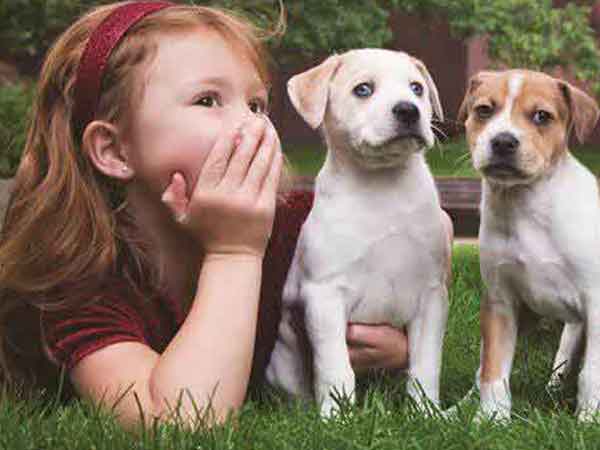Many children beg their parents to get a puppy or a kitten as soon as they can talk. We all know that children really enjoy the companionship of animals and can greatly benefit from having a pet to take care of – be it a dog, a cat, or a goldfish. Animals
Many children beg their parents to get a puppy or a kitten as soon as they can talk. We all know that children really enjoy the companionship of animals and can greatly benefit from having a pet to take care of – be it a dog, a cat, or a goldfish. Animals can teach our kids compassion, sense of responsibility; positively affect their physical, mental, and emotional development.
It is very important that your children, no matter how small they are, are made part of the decision to bring a pet home. This will ensure that your child is comfortable with the animal and is explained the responsibility that comes with owning a pet. It can be a great bonding experience to make your kids part of the animal adoption process – do all the research together, learn what kind of pet you would like to adopt and how to take care of it. Your child should be explained that bringing a pet in the house is a 10-15 year commitment and that they will need to take part of the responsibility when caring for your new family member.
There are several things, apart from basic training, that you need to be aware of when bringing a pet into the house with children.
Do not count on your children to take all the responsibility of the pet, even though they might have promised you to do so. You do need to, however, encourage them to share the responsibilities as much as possible and make them feel proud of their achievement.
Teach your child the rules of handling the pet. Generally speaking, young children aged 2-5 years old should not be picking the pet on their own. You will be better off just placing them on your child’s lap or encouraging your child to pet the animal while it is on the floor.
Set boundaries for your kids. Children can sometimes be over-enthusiastic when it comes to animals and not all animals will tolerate such behavior. No one wants their ears or tail to be pulled or the mouth to be inspected – neither you nor your new puppy.
Learn yourself and teach your children to recognize the stress and warning signals of the animal. Be in a yawn or growl – you and your children should respect the animals and leave them alone when it gets stressed or uncomfortable. A lot of animal-related accidents, such as bites, occur only because people are not able to recognize stress and warning signals that the animals are sending their way.
Never leave children and animals unattended under any circumstances! Parents should always oversee their children playing or taking care of an animal
And last but not least - teach your children to respect animals. Remember that just having a pet in the house will not teach your child to love animals or be responsible and compassionate – they learn it only when they see examples set by their parents.


